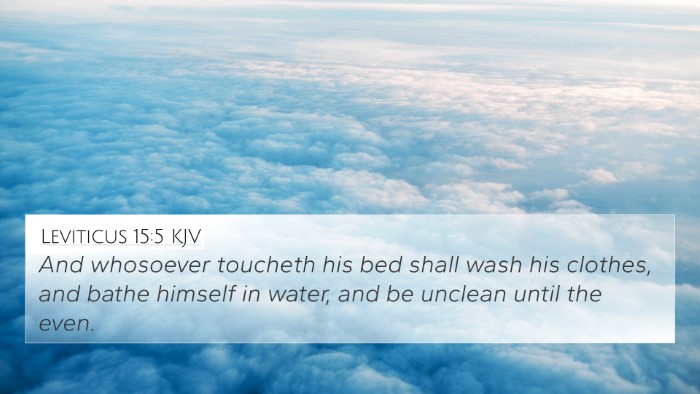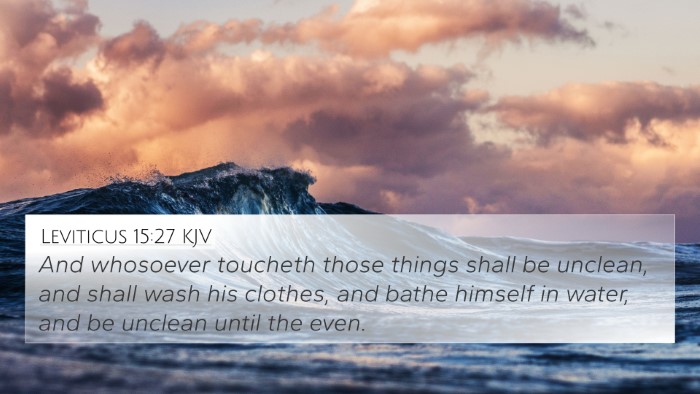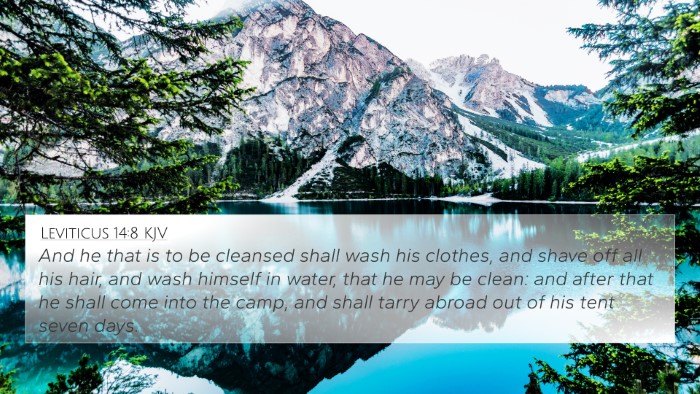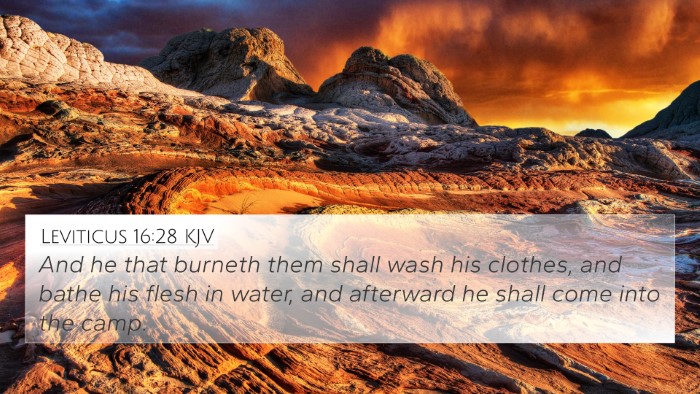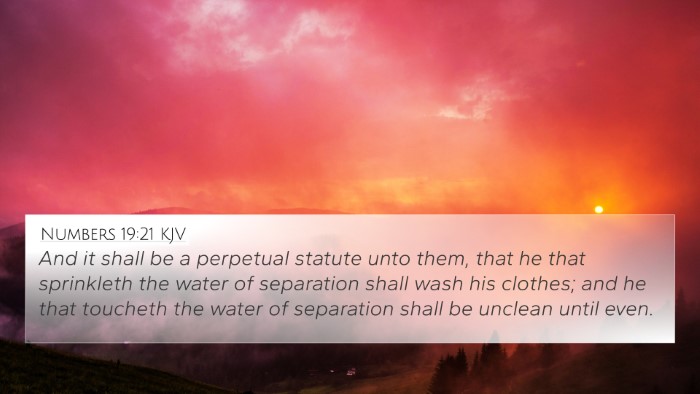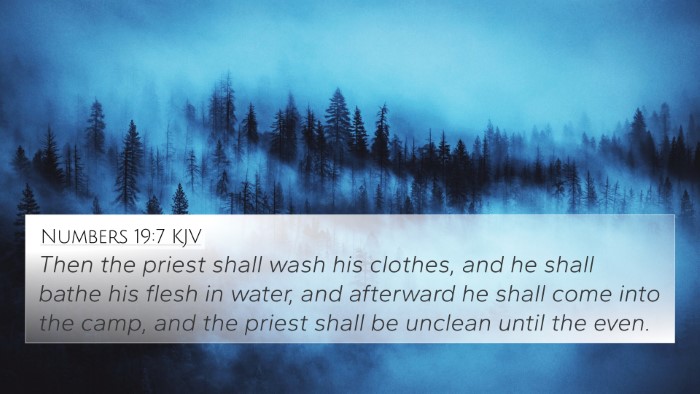Understanding Leviticus 16:26
Verse: Leviticus 16:26 - "And he that let go the goat for the scape-goat shall wash his clothes, and bathe his flesh in water, and afterward come into the camp."
Summary of Meaning
Leviticus 16:26 is part of the instructions for the Day of Atonement, emphasizing the intricate protocols of the ceremonial law given to the Israelites. The verse highlights the responsibility of the individual assigned to release the scapegoat, symbolizing the carrying away of the people’s sins into the wilderness, thus facilitating reconciliation with God.
Insights from Public Domain Commentaries
-
Matthew Henry:
Henry explains that the release of the scapegoat symbolizes the removal of sin from the community. The act of washing clothes and bathing serves as a purification ritual, indicating the seriousness of carrying sin away and the need for personal holiness after such a significant task.
-
Albert Barnes:
Barnes emphasizes that this process represents the divine order in dealing with sin. The necessity for the handler to wash and clean himself showcases the principle of being clean outwardly and inwardly, reflecting an important aspect of approaching God.
-
Adam Clarke:
Clarke notes that the act of releasing the scapegoat serves a practical and spiritual purpose. It delineates the separation of the community from their transgressions, where the rituals surrounding the scapegoat underscore God’s provision for atonement.
Bible Cross-References
To fully grasp the depth of Leviticus 16:26, one may explore connections to several other passages:
- Leviticus 4:27-31: Discusses sin offerings and the significance of atonement.
- Hebrews 9:7: Relates to the rituals performed by the high priest on the Day of Atonement.
- Isaiah 53:6: Prophetic reference to the collective iniquity of the people being laid on another.
- Matthew 27:46: Jesus, carrying the sins of the world, reflects the ultimate fulfillment of this atonement principle.
- Psalm 103:12: Illustrates how far God removes our transgressions from us, akin to the scapegoat's journey.
- 1 Peter 2:24: Connects to the theme of bearing sins, as Jesus did on the cross.
- Romans 5:8: Highlights God’s provision for sin, mirroring the purpose of the Day of Atonement.
Thematic Connections and Cross-Referencing
The release of the scapegoat and the purification rituals denote a larger divine narrative concerning sin and redemption throughout the Bible. Exploring the thematics linked with Leviticus 16:26 can yield richer understandings:
- Sin and Atonement: This theme emerges as foundational throughout Scripture, where various acts of sacrifice signify the earnestness of sin's separation from God's people.
- Purification: Ritual cleanliness is a recurring subject in the Bible, indicating broader spiritual implications regarding one's approach to God.
- Separation from Sin: The concept of removing sin is echoed across various scriptures, reinforcing God’s desire for holiness among His people.
Tools for Bible Cross-Referencing
For further exploration of Leviticus 16:26 and its intertextuality, employing tools for Bible cross-referencing can enhance your study.
- Bible concordance
- Bible cross-reference guide
- Cross-reference Bible study methods
- Bible reference resources
Conclusion
In conclusion, Leviticus 16:26 serves as a significant verse within the wider context of Levitical law, offering profound implications about sin, atonement, and holiness. As we examine cross-references and thematic connections, we uncover the rich tapestry of God’s redemptive plan that unfolds throughout scripture. This inter-Biblical dialogue aids in understanding the gravity of sin and the gracious provision made by God for reconciliation through Christ.





